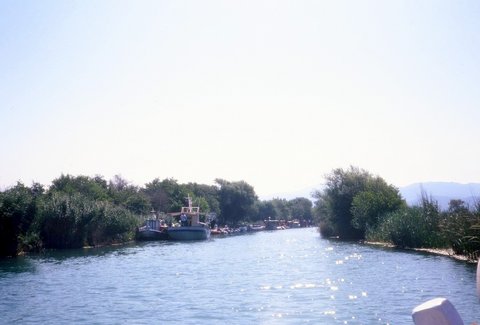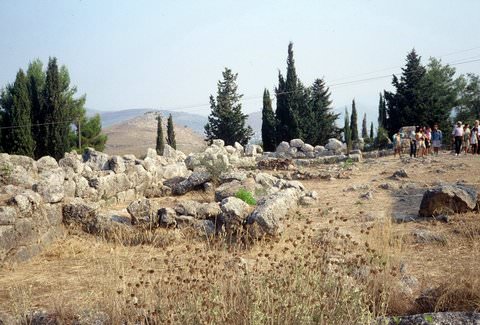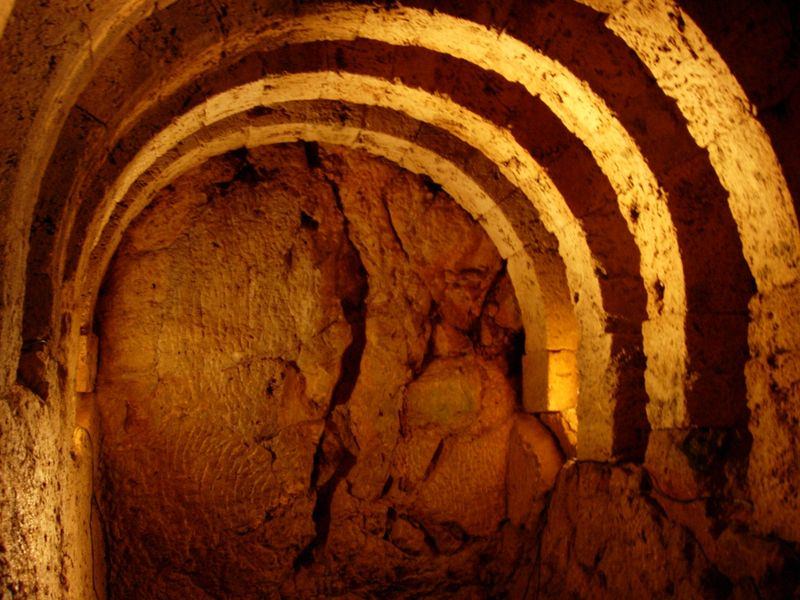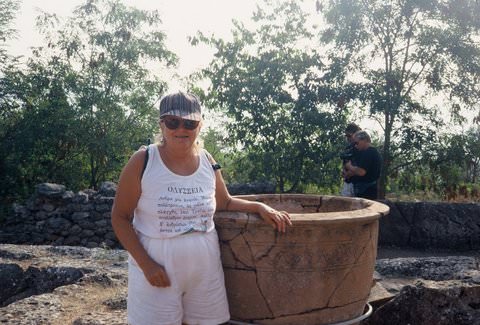I am aboard a boat cruising along the Greek coastline toward the delta of the Acheron River on the Ionian Coast of Greece. A brisk wind has blown up and the captain navigates through the choppy water sailing precariously close to the rocky shoreline. All along the coast great jagged rocks loom out of the sea like giant sea monster’s teeth. The limestone cliffs are riddled with caves. This is the wild coast that Circe described when she advised Odysseus who was going to Hades to conjure Achilles’s ghost.
We enter the mouth of the narrow river. The boat cuts a silent swathe through the jade coloured water. The air smells of the damp earth. Thick reeds line the shore where I imagine crocodiles may once have lurked. This is the mysterious river, symbolized in Greek myth as the River Styx. There are no corpses aboard our boat, their eyes sealed shut with gold coins. The ferry man is not Charon, but a jovial old salt, Captain Kostas. Like Odysseus, I am going to visit the Oracle of the Dead, the Necromanteion of Ephyra , a mystical sanctuary that the ancient Greeks believed to be the entrance to the Underworld, Hades! It’s a chance to experience a séance ancient style.
“Beach your boat there and march into Hades’ Kingdom of Decay,” Circe ordered Odysseus. Captain Kostas moors the boat by a reedy embankment. He tells us we must walk a short distance up the hillside to reach our destination.
I trudge up the gravel road. Fields of corn grow abundantly in the fallow earth. Up on the hillside, there is a small grove of trees— mainly cypresses which are emblems of the dead, marking the site. Amid the trees, protected by cyclopeon walls and an inner circuit of polygonal masonry, dark passageways lead to the mouth of an underground cavern which was believed to be the entrance to the realm of Hades and Persephone. Ancients came here to consult the souls of the dead. Circe instructed Odysseus: “This is the spot, my lord, that I bid you seek out…then the souls of the dead and departed will come up in multitudes.”
The Necromanetion was inhabited from Mycenaean times in the Bronze Age but wasn’t discovered by archaeologists until 1958. This was the most famous sanctuary of its kind in antiquity. The ancients believed that a person’s soul was immortal after its freedom from the body, and that a mortal’s contact with the dead, demanded special sacrifices and rituals. Offerings of milk, honey and the blood of sacrificed animals were made in the hope of conjuring the spirits of the departed. The Nekromanteion is an example of how the priests played mind-games with the supplicants.
Pilgrims were lodged in a windowless cell to await their trip to the Underworld. They were subjected to physical and spiritual tests, and were obliged to follow a special diet of beans and various hallucinogenic substances. After several days of magical rituals, prayers, invocations, and questioning by the priests, the supplicants were led down the mysterious labyrinth-like corridor filled with hallucinogenic smoke, to the entranceway of Hades, having faith that the apparitions of the dead would appear to them. A vault, deep in the bowels of the earth, was thought to be the dark palace of Persephone and Hades, the meeting place of the Dead and the Living.
As I walk the narrow labyrinth to the cavern, I imagine what it would be like for the supplicants as they inhaled the hallucinogenic smoke and they groped their way to the entrance. I descend into the cold, musty crypt by a narrow stairway. The underground chamber is carved in the rock with fifteen stone arches supporting the roof. It smells of ancient mould and damp earth.
As I stand in the gloom of the stone cavern I try to conjure a few ghosts of my own. It is an eerie place, and it is not impossible to imagine how the pilgrims, disoriented and under the influence of potions, could be fooled into believing the dead were really there communicating with them. During Roman times, the Oracle was proven to be a hoax when pulleys were discovered in the chamber, which apparently had been used to hoist up the priests who simulated the departed and answered the questions of the pilgrims. The walk through the hallucinogenic smoke of the labyrinth, the isolation and rituals they had performed during their stay, prepared them for accepting the appearance of the ‘dead’ person as ‘real’. After this discovery, the Necromanteion was destroyed and lay hidden until it was excavated in 1958 and restored by the Archaeological Society of Athens.
I emerge from the spooky earthen chamber into the bright afternoon sunlight. Although it was an unearthly experience, I didn’t visualize any spirits other than those of the pilgrims who may still linger there.
IF YOU GO:
The Necromanteion is open from November – March Daily 8.00am – 3.00 pm July – October, Daily 8.00am – 9.00 pm
Admission (not included in cruise) 2 Euros; 1 Euro for seniors and children
Tickets can be purchased at the port in Parga for the cruise up the Acheron (7.50 Euros) and the site can also be reached by car on the Preveza road to Messopotamo.
Guided tours by bus also operate from Parga.
Written by Ruth Kozak for EuropeUpClose.com




